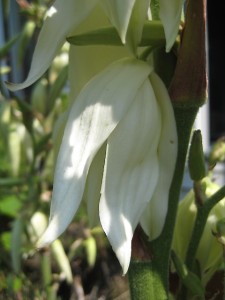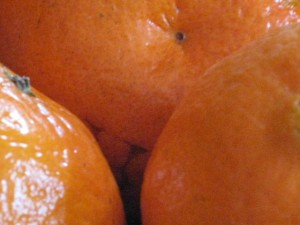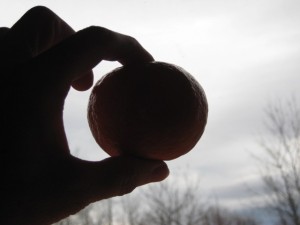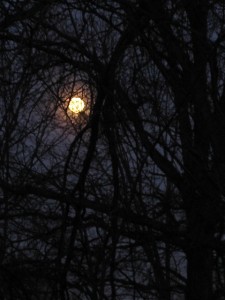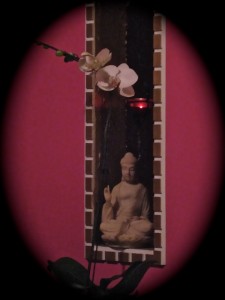
Between us, Chuck and I have five children, his three and my two. All in their twenties, all on their own journeys, we worry about them nonetheless. Some days we hear from them as they express deeply painful challenges. On other days they call with good news, glowing in their accomplishments, bubbling with happiness and self-confidence. At other times we hear nothing at all for weeks on end. One of our greatest challenges as parents is to let them all go into the world and have their experiences, whatever they may be, knowing that they are learning how life works, deciding how they want to live their own lives, just as we’ve done.
During my intense recapitulation period, which spanned three years, I received hundreds of messages of guidance. They came from many sources—from dreams, from the signs and synchronicities I’d encounter in everyday life, from otherworldly sources, from the ever-deepening recapitulation process itself—as I dove deeper and deeper into my past and discovered what I harbored in body, mind, and spirit as a result of that past. Last night, as I was drifting off to sleep, a familiar voice came to visit and delivered a message from my days of recapitulation.
“Just turn away from that which comes to occupy your mind, turn away from worry, for worry is nothing more than a cogitation of the mind,” the voice said. “Turn away and you will see that it is nothing; it only exists if you let it.”
And so I turned. Each time I woke during the night, I’d automatically turn, and in so doing I left whatever was seeking entry behind. Without thought, I’d turn away, instinctively knowing that it was the right thing to do. But I did notice that each time I turned something seeped away from my awareness; I could feel it fall away from my head and land on the pillow behind me. A thought that was just about to anchor, easily flowed out of me, for I would not allow it to get a grip. And I realized the truth of worry, that it’s like air, flowing through the universe looking for a crack to seep into, looking for an opening. In turning, I refused it. “Nope,” I said, “you can’t land here.”
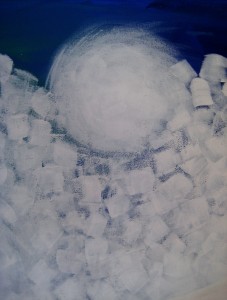
For some reason lately, worry has been seeking me out. I feel it coming to me, asking me to engage it. The Shamans of Ancient Mexico, from the lineage of Carlos Castaneda, talk of worry as an entity, seeking to attach and siphon our energy, and that is exactly the way I feel it, as a foreign entity looking for a way in, seeking sustenance. I feel it tickling me, asking me to please let it in.
As a clairvoyant, I’ve made a concerted effort to not let certain “knowings” in, to refuse to accept some of the things that I intuit. There are things that it just isn’t right to know and so I turn away from them as soon as I sense them trying to occupy my psyche, for they too will siphon my energy. In the past, I’d get clear messages of knowing, seeing the unfolding of events, seeing deaths. Such insights aided me in trusting my psychic abilities, but now I don’t need such things, for I accept where I am and who I am. I understand that this “knowing” is natural, part of being human, and yet it must be carefully considered and utilized in the right way.
In addition, I’ve learned that it doesn’t matter what I know, that the most compassionate thing is to just be present for people as they go through their lives, to be available when sought out. The Buddhists say that it isn’t right to interfere with another person’s life, and I understand that, that we may be interrupting a process many lifetimes have been spent perfecting and is perhaps on the verge of being resolved. I’ve learned that you can’t tell anyone anything either, no matter how clearly you see. I believe that people will get what they need when they are ready, and only when they are ready. And they will get it in their own way.
And so, last night, as worry about others came to tease me, asking me to attach and give it life, I paid attention to my message of guidance and turned away. For I also believe that in attaching to worry my energy would feed it, grow it, and perhaps even manifest it, when in reality I know that in the lives of others there are so many possibilities, so many outcomes, so many paths to unfold.
And so I refuse to influence another’s choice, another’s life in that way, even energetically. By attaching my worry to another, to their decisions, I believe that my energy will interfere. Instead, I choose to send positive energy out into the world, loving energy that says, “Take your journey!” At the same time I continue to train myself in compassionate detachment.
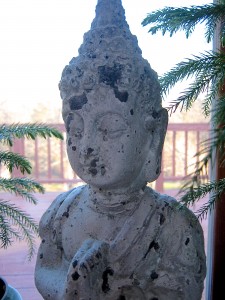
I learn compassion as I step back and let others live their own lives, learning as I once learned, by living my own life. As a teenager and young adult, the only thing I wanted was to be freed of others, of my parents and the life I’d had with them. And yet my father was a supreme worrier and so—clairvoyant that I was—I sensed his worry and his fears, and they burdened me. With all that I carried inside me, his burdens were the last things I wanted, and so I was forced to reject him, turning from him so many times because I could not bear his thoughts. I told myself I would never do that to my own kids. I would never burden them with my fears and worries. And so each day, I energetically send them off on their own journeys, freed of my worries.
I know that we all have to live out our lives as we must. I cannot change another’s path, make their choices for them, or direct the outcomes of their lives. I can only work on my own. And so I continue to turn.
Compassion enfolds me at every turn. Love embraces me at every turn. Life fully expressed asks me to come into its arms, receive it, and keep going with it to a new level of understanding and growth. And so I turn and turn, night and day, finding my way to energetic freedom and compassion for myself and others. No matter how much I love the others in my life, I must let them go so that they may fully live, as I too wish to fully live.
Turning,
Jan
And yes, it was the voice of Jeanne that came to me last night, in a deeply loving and compassionate way, so reminiscent of my days of recapitulation.


